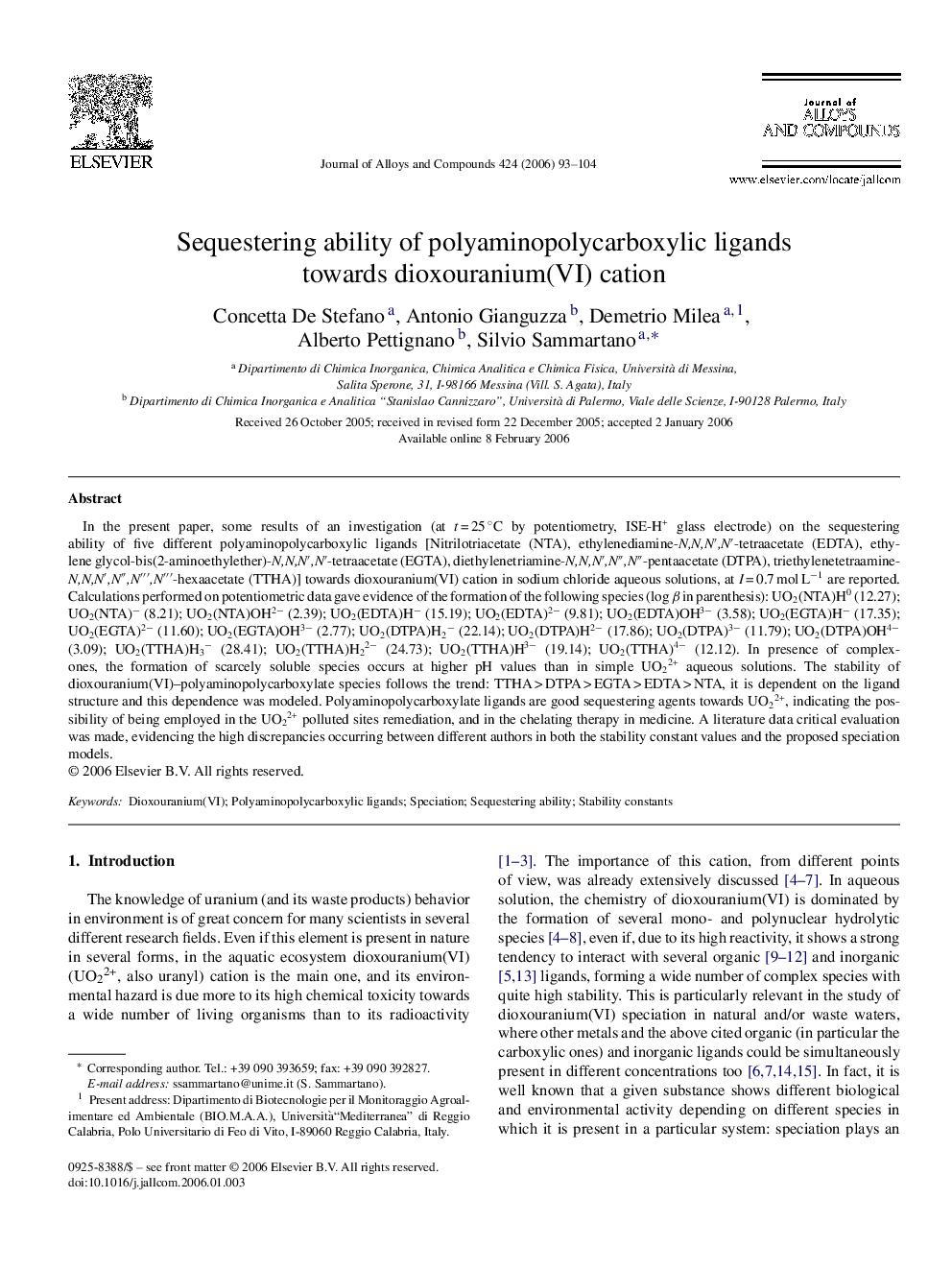| Article ID | Journal | Published Year | Pages | File Type |
|---|---|---|---|---|
| 1627293 | Journal of Alloys and Compounds | 2006 | 12 Pages |
In the present paper, some results of an investigation (at t = 25 °C by potentiometry, ISE-H+ glass electrode) on the sequestering ability of five different polyaminopolycarboxylic ligands [Nitrilotriacetate (NTA), ethylenediamine-N,N,N′,N′-tetraacetate (EDTA), ethylene glycol-bis(2-aminoethylether)-N,N,N′,N′-tetraacetate (EGTA), diethylenetriamine-N,N,N′,N″,N″-pentaacetate (DTPA), triethylenetetraamine-N,N,N′,N″,N′′′,N′′′-hexaacetate (TTHA)] towards dioxouranium(VI) cation in sodium chloride aqueous solutions, at I = 0.7 mol L−1 are reported. Calculations performed on potentiometric data gave evidence of the formation of the following species (log β in parenthesis): UO2(NTA)H0 (12.27); UO2(NTA)− (8.21); UO2(NTA)OH2− (2.39); UO2(EDTA)H− (15.19); UO2(EDTA)2− (9.81); UO2(EDTA)OH3− (3.58); UO2(EGTA)H− (17.35); UO2(EGTA)2− (11.60); UO2(EGTA)OH3− (2.77); UO2(DTPA)H2− (22.14); UO2(DTPA)H2− (17.86); UO2(DTPA)3− (11.79); UO2(DTPA)OH4− (3.09); UO2(TTHA)H3− (28.41); UO2(TTHA)H22− (24.73); UO2(TTHA)H3− (19.14); UO2(TTHA)4− (12.12). In presence of complexones, the formation of scarcely soluble species occurs at higher pH values than in simple UO22+ aqueous solutions. The stability of dioxouranium(VI)–polyaminopolycarboxylate species follows the trend: TTHA > DTPA > EGTA > EDTA > NTA, it is dependent on the ligand structure and this dependence was modeled. Polyaminopolycarboxylate ligands are good sequestering agents towards UO22+, indicating the possibility of being employed in the UO22+ polluted sites remediation, and in the chelating therapy in medicine. A literature data critical evaluation was made, evidencing the high discrepancies occurring between different authors in both the stability constant values and the proposed speciation models.
